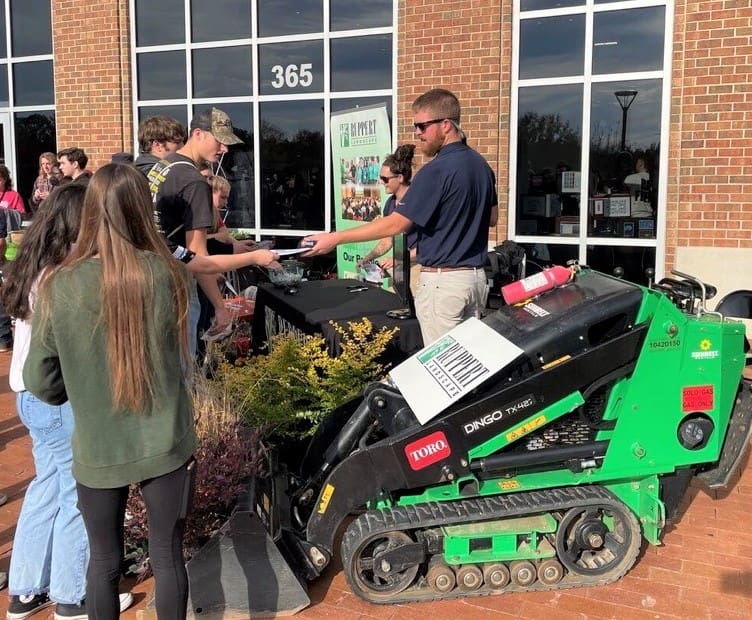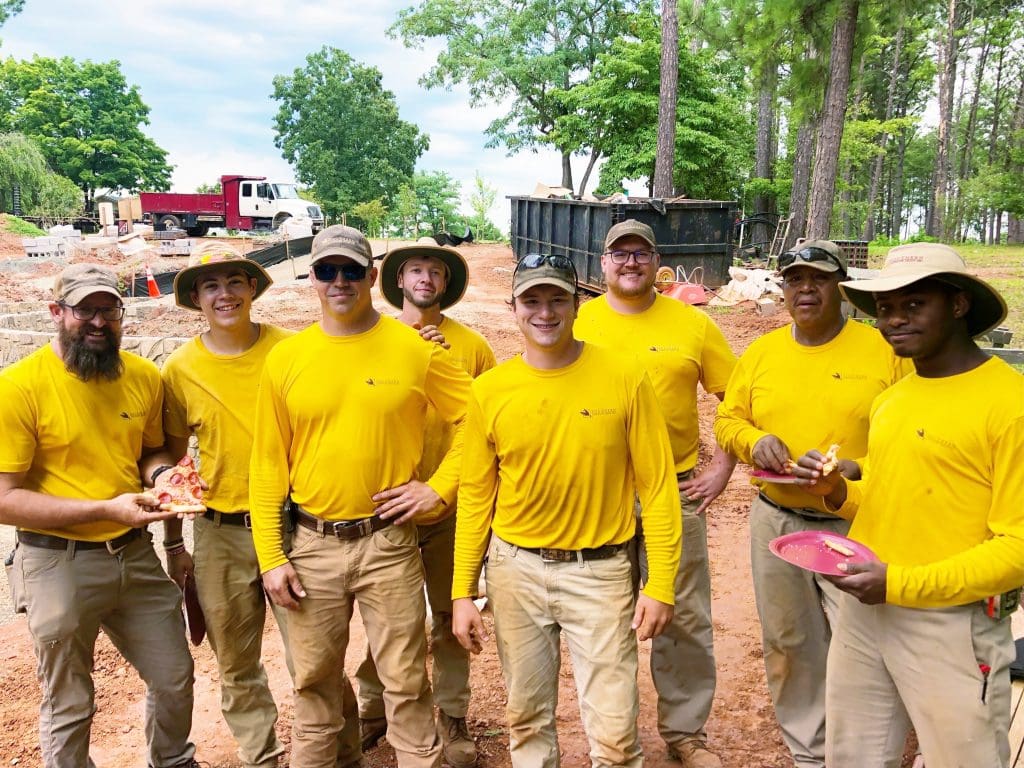
Nothing is more frustrating than having a potential employee disappear before recruitment begins. If interest drops between the application submission and the in-person interview, you should fine-tune your recruitment funnel. Uncovering why your potential hires “ghost” you before they even meet your hiring manager can save you time and help you hire the right people for the job.
Use Culture to Recruit
Company culture is key, and while most landscaping companies are getting it right, they may need to share it with the rest of the world to spark interest and help potential hires follow through with their applications.

Social media is an easy way to give applicants a peek behind the scenes to see how your company treats its employees and give them extra incentive to apply. Holly Bruffy, HR director of Southern Landscape Group, Inc., based in Evington, Virginia, uses social media to show what kind of company culture a potential hire can expect if they join the team.
“One of the things that we focus on more than anything is building our culture,” she says. “We celebrate our culture quite a bit on our social media with birthdays, anniversaries, team events and showcasing our team at work. That in and of itself brings in applicants. In between our phone and in-person interviews, I’ll encourage them, especially if we’re talking on the phone and they don’t know a lot about us, to check out our social media.”
The company’s social media feeds are filled with photos of employee events and achievements. They use Instagram to target younger generations in the workforce and LinkedIn for managerial positions. When potential workers see how the employees interact with each other and the perks of working for the company, they may be inspired to apply — and follow through — with the hiring process.
Community outreach also helps share company culture and reach potential applicants, according to Courtney Pohlit, director of people and recruiting at Ruppert Landscape, based in Laytonsville, Maryland. They have 31 branches that each manage their own recruitment with the help of her department. Branch managers attend career fairs, work with area colleges with landscaping programs and hold open houses.
“Sometimes our branches will hold an open house and invite the community to check out the branch, meet our team and learn a little bit about not only the company but this particular location and the folks that work here,” she says. “We also get involved with local community fairs. We put up a lot of flyers in community centers. Our folks go out and post fliers in their local markets. We rely on our employees to get the message out (that) this is a great place to work.”
Make It Easy to Apply
With applicant tracking software and recruiting platforms available, the application process does not have to be difficult for potential hires. Pohlit recently launched a new system that makes it easy to apply for a position and includes an option for Spanish-speaking applicants.
“We started using it in late July, and it’s been very successful for us,” she says. “It’s allowed us to really showcase more online. We have our careers page in both English and Spanish now, which is huge because we do hire a lot of Spanish-speaking employees. So, it’s really helpful for them to be able to go through the workflow completely in Spanish when they’re submitting an application online.”
The tracking system is quick and user-friendly. An applicant can provide basic information for a field position or upload a resume for a managerial job. Pohlit says they plan to add a texting feature to recruit applicants via a smartphone for people who may not have access to a computer.
“It will be very beneficial because applicants can just jump right on their smartphone,” she says. “They might not have access to a computer, or they may be driving down the street and see one of our ads or something and want to apply right away. It will keep them having to either get on a computer or go to our location.”
Stay in Touch
Technology has made it less difficult to apply for jobs, but it can sometimes feel impersonal with online applications and automated email responses. Applicants will appreciate being contacted quickly so they know where they are in the hiring process and what the next step may be.
Pohlit says their goal is to review applications within 24 hours of receipt. Each branch does its own hiring, so the managers flag the applicants to contact for a phone interview and let the rest know of their status.
“If they’re not a good fit for the position, we go ahead and let that applicant know,” she says. “But if it is somebody that we’d be interested in, we make sure that we’re getting back to them very quickly. We try to keep communication open and frequent with the applicants.”
Bruffy texts applicants coming in for interviews because it is more immediate than sending an email. It also reduces the number of people who skip the in-person interview after having a phone conversation.
“After I hang up with the person from scheduling (an in-person interview), I will text them to verify that they have the address in writing,” Bruffy says. “Then usually the morning of, I will send another message saying I look forward to meeting them.”
The younger generation in the workforce is used to staying connected via their smartphones, so she says they appreciate the ability to text if they are running late or need to reschedule.
Get Beyond the Basics
Work experience is important, but it is not always the main factor in hiring. Potential hires must fit within a team and work well with their supervisors. Bruffy likes to ask potential hires about their interests and goals, along with basic questions about education and work history, to see if someone is a match.
“We always ask everybody what some of their goals are because we also want to help them achieve (them),” Bruffy says. “We provide a variety of services to our clients (carpentry, hardscaping, landscaping, maintenance and horticultural services), so knowing their goals is nice to help accommodate different interests. Sometimes people are interested in one area of our business that we do not necessarily have an immediate opening, and they are willing to step in to get a foot in the door. Knowing their goals helps to alleviate retention issues in the future.”

Bruffy adds that she also likes to discuss salary expectations during the phone interview.
“In an effort of transparency, we discuss salary in the initial phone interview,” she says. “If the requested range is outside of our pay scale, we discuss that upfront so that there are no surprises for the applicant, or us, later in the hiring process.”
Because Ruppert Landscape has multiple branches, Pohlit says it is important for the location manager to be involved in the hiring process. All of their managers and supervisors undergo human resources training to vet applicants for their locations.
“One of the reasons why we want the hiring manager to be the person interviewing is because we want to make sure that whoever is going to be working with that team is a good fit,” she says. “We like our employees to take ownership in the process and our front-line managers to feel empowered to make decisions that will be best for their individual teams. When that’s done well, you build stronger teams.”
Access NALP’s workforce development resources here.
This article was published in the Jan/Feb issue of the magazine. To read more stories from The Edge magazine, click here to subscribe to the digital edition.

